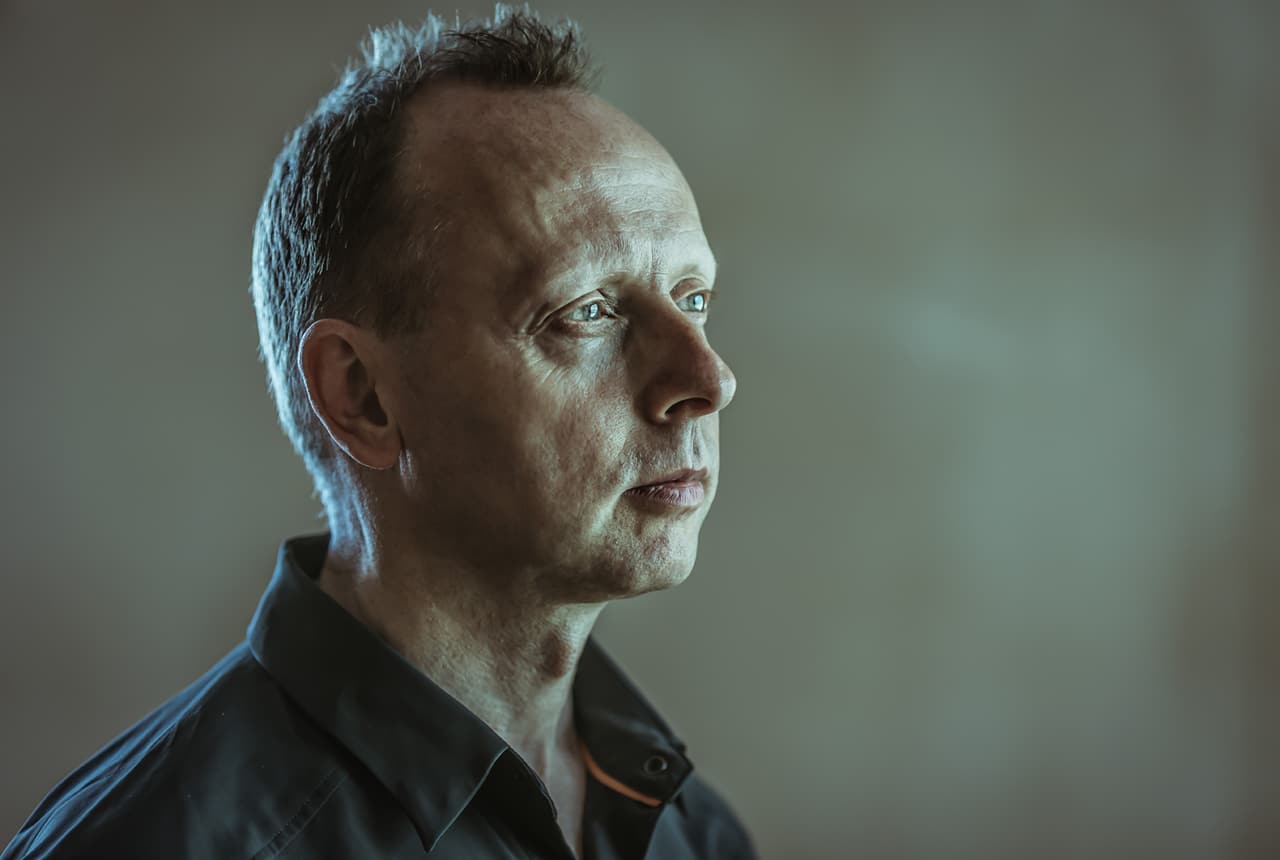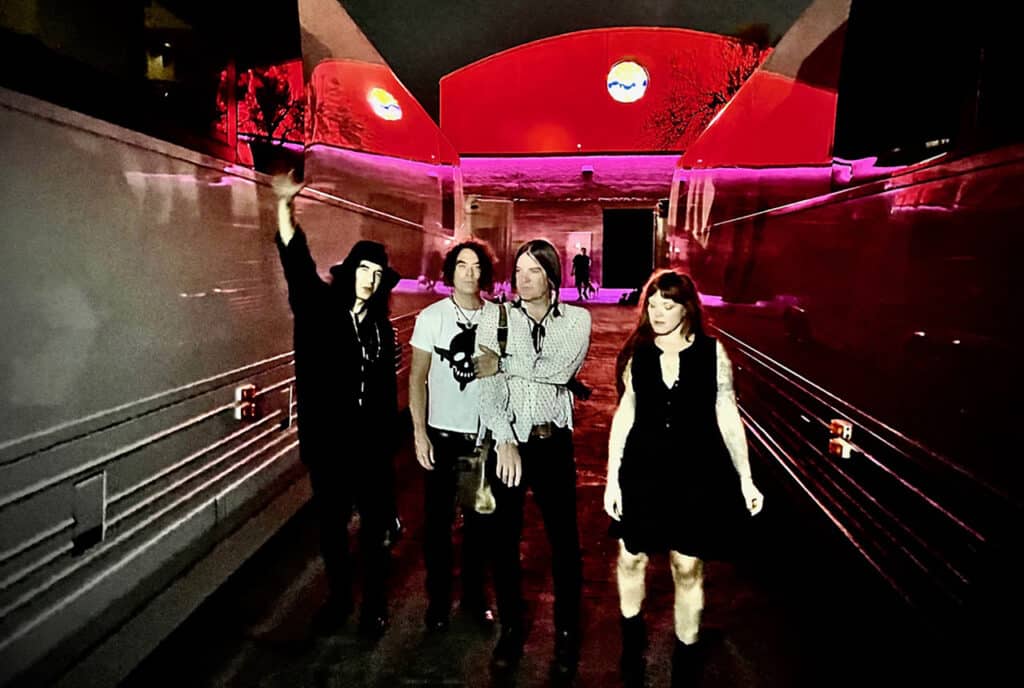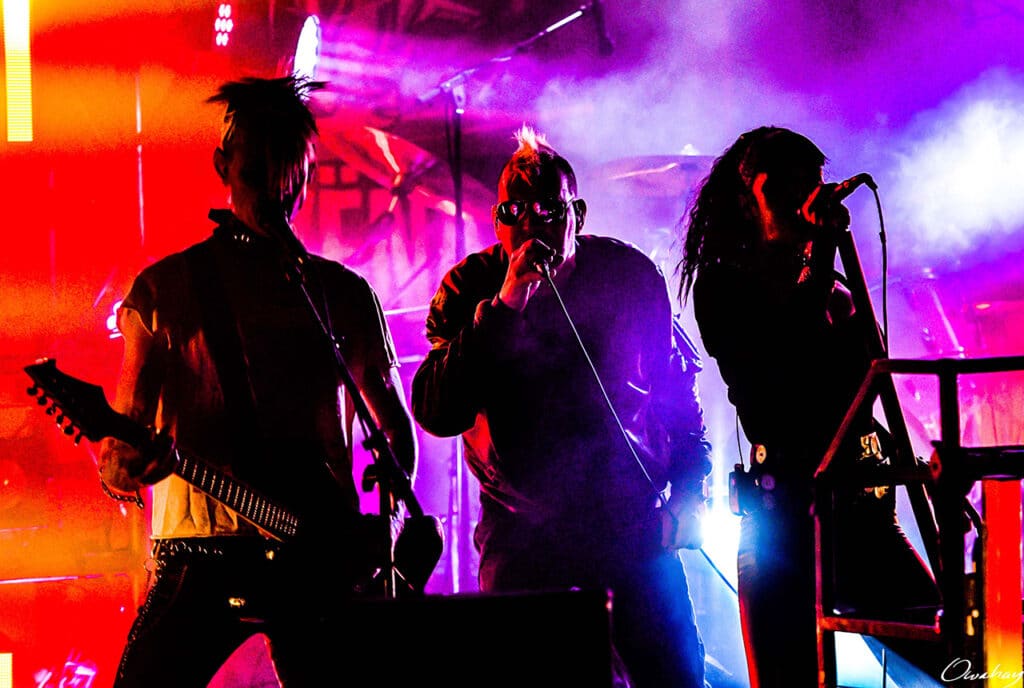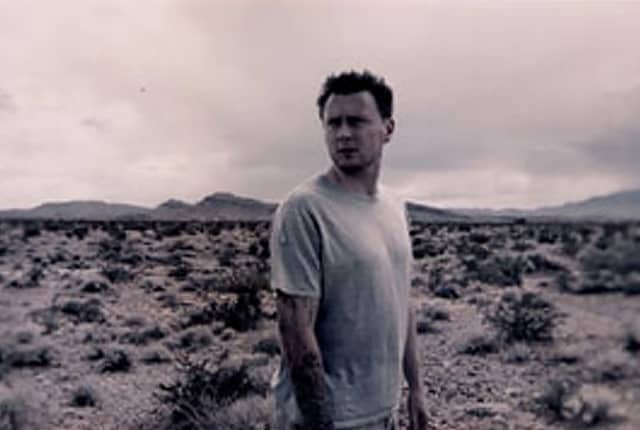Over the course of his long career, British artist Scanner (Robin Rimbaud) has worked with a variety of electronic musical styles and has been part of numerous collaborations. His projects beyond his own recordings include scoring contemporary dance productions, sound installations, and musical partnerships such as Scanni (with Anni Hogan).
Scanner’s 1996 “Trawl” (a collaboration with Mick Harris of Scorn/Napalm Death and legendary producer Bill Laswell) was recently re-issued in a new expanded edition. In the following interview, Rimbaud discusses the release, his career, and more.
You’re recently put out an expanded re-issue of “Trawl.” What were the reasons behind re-issuing that particular release at this point in time?
I suppose partly it’s due to the pandemic in that it gave me time to go through stuff. I could go through boxes and boxes of DAT tapes, about 2000 CDRs, all kinds of things. And suddenly, I can map my creative life in terms of the medium I was using. So DAT tapes went to a certain period, which were then taken over by Mini Discs very briefly, then CDRs, then digital files. Real to Reals very early on. So you can kind of see your life. And I came across all the samples for “Trawl,” all the stuff I did. Basically it was me crouched on the floor where I used to live in South London with a cheap Yamaha keyboard, trying to create samples and strange noises with this four-track recorder.
I came across all the sounds, and I thought it was great. Then I was in correspondence with another friend in Russia and he said, “Do you fancy the idea of making a CD issue of it?” He’d previously released things like Muslimgauze and all these kinds of strange industrial experimental music. And I thought, well, a small edition would be quite nice, just 300 copies. He does very handsome, very plush-looking productions. I had one of the Muslimgauze ones he’d sent me before because I made a remix for one of the releases. I thought this would be really good fun. It led me to go back into the archive. I found the original tapes for it, but then I took the samples again. And I thought, “Let me try and do something using the same sounds with the technology of 2020.”
So I put them through Native Instruments Kontakt and all manner of things, and literally just replayed them and made these new pieces. Actually, they turned out well. It still has the same language in a way, most of it. And then there was a couple of tracks that I literally just recorded at the same time, which I’d used maybe in performance or something like that. I just thought maybe they would complement the material. The original record was a kind of summation—not dub, but a kind of more openness with rhythm, these kind of expansive pieces.
At the time, people like The Orb were making these tracks that were around 20 minutes long, for a single track. And I loved this idea of this piece being very organic and being very gentle and opening up into something. And then purely just through conversation, I managed to get Bill Laswell in the US and Mick Harris of Scorn, who I already knew, to each make a mix of it as well. So I got these two very different versions. The interesting thing for me with the Bill Laswell version is that it’s me mostly playing the bass on it, which I always thought it was quite ironic in that Bill Lasswell is recognized as a bass player and it’s actually me playing the bass on it.
But he made this whole 16- or 18-minute long reconstruction. It just felt like a good time to share it again with the world. That was all really in a simple way. One doesn’t get rich by these kinds of releases. For me, it’s sort of just using the technologies that we have now, whether it’s Bandcamp or whatever it may be to dig into the archive and think, “Oh, maybe this is of interest to people,” because you probably missed out on it. Back in 1996, it only originally came out on vinyl on what was to be a new label, called Chreode. My friend, John Everall, who had a group called Tactile, made this sort of very dark industrial music.
He died suddenly in 2014. So I found out a box of the vinyl, like just all white labels, and I sold them through Bandcamp and gave the money to his widow so they could pay for his funeral. John was one of those kind of guiding lights in terms of making connections between lots of people. He was a kind of chain-smoking, cat-loving heavy drinker who was good friends with lots of my friends and just our paths kept crossing. Imagine this was the 1990s when we didn’t have this kind of technology. People didn’t really have mobile phones. So it was really about just talking on the telephone for too long.
Could you talk more about how the available technology at the time shaped the sound of ‘Trawl’?
If you think about the original rhythm, the only way I could make the rhythm was through samples. I didn’t even have a real sampler. I had a Digitech Time Machine, with 7.6 seconds of storage. You could record any kind of sound in there. And then if you hit a certain button, you could slow that down so 7.6 seconds became 15.
The maximum length of time I could do something was really a high quality seven seconds. What I used to do was put sounds in there. All the kind of textual stuff is me playing with tape loops and things, then dropping them into this machine live and then just forming these kinds of textures. So the technology was incredibly rudimentary. It all went into a Fostex four-track cassette recorder. There were four layers of sound. Now, of course, you could bounce between those. You could take three layers and bounce them to one and so on, but I’ve always been quite a reductionist. And for me, four layers were more than enough, most times, so I had these voices and I used the radio scanner and just picked up live radio voices at the time and dropped those into the soundscapes.
In some ways, the technology was very restrictive, as opposed to today, when often you’re trying to work and you just kind of stare at it thinking, “Should I use this plugin? Should I use this soft synth? Should I use this pedal?” You’re kind of almost paralyzed by options. So one of the joys of the “Trawl” release is in a way celebrating the reductive means of creation. It was about using minimal means to make this thing happen. And it did. It’s funny looking back on it when I return to the samples. Also, I have a DAT of all the samples that I gave to Mick Harris and all the bits he sent back to me.
It’s funny just to hear. At the time, all you could do is literally just send somebody the sound of a drum, and somebody had to remap the entire thing. I never had any budget to be quite honest at the time when I was making this. I think I’d had a job just before that. And I think I’d only just given up my job not long before that. So this was me desperately trying to pay my mortgage in London, survive and make a record at the same time, on absolute minimum means. But it came together quite well. I don’t think it sounds dated too much. I’m quite surprised at that actually, given that it’s from 1995/96. That’s quite a long time ago and it doesn’t sound too bad, to be honest, given the way we can make everything sound so slick and sexy today.
What were the collaborative experiences like? Did you just send off the material for remixing, or was there discussion behind it?
Yeah. Two different approaches. The one with Mick was that I literally sent him the samples and he sent it back. And that was it. That was a very fast process. With Bill, it was lots of faxes, actually. I remember that exchange in faxes. It’s funny. If you remember what faxes happened to do after a while, it would be a bit like leaving something in the sun and it would fade away. So I have all these faxes from that period when there were people like Richard James, and a few other characters, we’d all send faxes to each other, just like the most comical things. I’ve even got all these faxes from David Lynch at the time, because I was talking to him about trying to make a record. So it was between him and his then business manager/wife, and I also have them from Bill.
It was more of a discussion of how far can I go with this? Because we didn’t know what we were doing with it. Maybe it was going to be a CD, but vinyl was extremely popular and maybe CDs weren’t so popular at the time. I can’t really remember. So we just let him go free with it. And then I didn’t meet Bill until I went to New York some years later and met him by Saint Mark’s Place, just around there, by what used to be St. Mark’s Bookshop, that great bookstore. We just stood out there and chatted for ages so much, so that we actually never went indoors anywhere. We just stood outside in the cold and talked to each other. So with Bill, it was faxes. With Mick it was literally as simple as that, it was just send the tape, get a tape back. But he’s kind of an efficient, slightly scary guy at times.
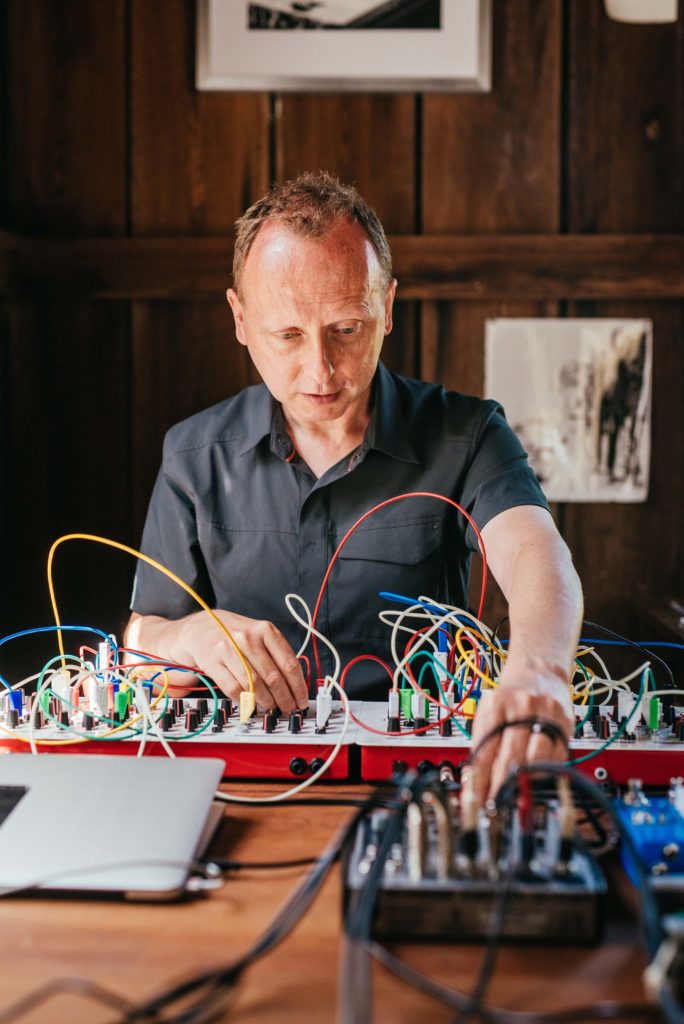
The technology has evolved quite a bit since the start of your career. Of the equipment and software that has emerged, what thing has had the greatest impact on your creative and working process?
I think a lot of people would point to something like Ableton Live. In the sense that it can both be just the most basic recorder for making work, but it also can offer you the most sophisticated pallet with all the kind of Max MSP plugins and the very clever programming skills that lots of people, myself not included, can put towards it to make these extraordinary things happen.
For me, it was interesting because this was a period in the nineties when it was still very much physical objects. So when I talk about the Yamaha keyboard, it was a DX100 that was cheap and plastic, to be honest. It’s one of those things that lots of Detroit DJs used for the bass sounds because it had a great bass sound. They probably sell for lots of money. I probably sold mine for something like 30 pounds at the time. So it was about objects and things.
What was really liberating was the ability, particularly with samplers, to be able to get inside the sound. When the Akai S1000 sampler came out in the mid-nineties, it cost almost 2000 pounds, but for me, it suddenly meant I could have up to one minute of sound, which may seem very limited, but that’s an extraordinary amount of sound when we were limited to 7.6 seconds before. And with Ableton, it’s as big as your hard drive. If you hit record on something like Ableton or Logic, at the bottom it will say something like, you have four days of recording space left, or whatever the size of your hard drive may be. It’s completely and utterly absurd.
Sampling technology was really liberating, which meant I could record all kinds of sounds. Everything from an air conditioning unit that I hear in a toilet in a basement in Berlin, through to the sound of rainfall in a shopping center in Liverpool, whatever it may be. And I can introduce those into the kind of sonic worlds that I’m making. For me, that kind of technology was really liberating and the miniaturization of this. So there were companies some years ago, like Electron in Sweden, who suddenly developed tools that brought these things into one block,. So you have things like the Octa track, the Digitech, these instruments that are actually instruments. You can play them, you can connect a keyboard to them, but they can become the brain behind so much. So many people these days use just a phone to make music.
I realized the more I look at the phone, I think I don’t actually use any of the apps on there. It’s just a very expensive phone book and calendar at times and a camera really. But it was the kind of miniaturization of the technology, the portability of it as well. When I first was playing live in about 94, 95, I remember traveling to a show in Vienna, Austria, and I took my then keyboard, which was a Yamaha SY22, which weighed an absolute ton. With the flight case, it took two people to carry it. And that was just one thing. Then I took a sampler with me. I took all this stuff and it was ridiculous. The ability that one has today to be so mobile and make work in a very mobile way, and to be able to collaborate as we can now via Dropbox or whatever, is an extraordinary development in technology. whereas in the past, a remix was to put everything onto a tape then to send that tape off to someone else and then wait for that to come back. And send these through couriers because you wouldn’t take the risk of sending it through the ordinary post because sometimes these things would carry the masters of your recording, which is kind of a terrifying thought. But there was something quite liberating. And also, I think we always adapt to technology, so that was what it was then.
I’m struck today that you go to an Apple store somewhere and there’s always somebody there standing saying, “But I’ve lost everything on the computer. I never backed it up.” And you think, “You only need to buy this thing [an external hard drive], which is going to cost you not very much and save you a world of stress.” You know, it’s curious how technologies have adjusted like that over the years. We, you know, you and I have both adapted to it as lots of people have. There are generations who’ve grown up who have no idea what these kinds of things are or what they even do. I’ve always loved technology. I’ve always been somebody who absolutely embraces the possibilities of it and more than anything, the kind of practical side of it, how they enable, and I use the word repeatedly, but they really do. They make things happen, which is exciting.
In addition to your own releases, you’ve been involved with many collaborations. How do you determine what to take on? What do you look for in collaborative projects?
It depends. If a designer talks to me and says, “I want to work with you on this film,” or if an artist approaches me about an installation in a museum, or whatever it may be, all those things begin with a conversation. It’s always about me talking to these people and determining what tools might suit it. Sometimes the quickest response is through digital tools, actually using the computer. There are things like modular synthesizers and all kinds of weird little gadgets I have and processes and boxes things can pass through. It’s sort of just the mechanics of what leads to it. I tend not to judge or choose. It’s just kind of what the moment seems to lend to it.
A good example is this: I was working with a dance company and the choreographer said, “I need a piece that is this kind of steady pulse for about 28 to 30 minutes. So I need something that kind of keeps this steady clock, but also I want to work with an orchestra.” I said, “Okay, I can do both of those.” So I wrote this kind of orchestral piece with all these players, even somebody playing the saw. I wrote that piece, and I wrote this other piece. So one piece was notes, real music. The other one was all digital, and it was all made on the modular synth. It was all just these rhythms that would modulate and change over 28 to 30 minutes. And then the piece started kind of like five, four, three, two, one; the rhythm started and the orchestra started, neither of them listened to each other. The orchestra didn’t need to play to a time signature. They just played this piece. And then they finished at the same time and it was fantastic. It was such a beautiful piece called “Tomorrow.” The company is called Ballet Rambert. It was based all on Shakespeare’s Macbeth. It was an Australian choreographer named Lucy Guerin. It was such a beautiful piece. In fact, we made a few more pieces after that. We made a piece called “Split.” It’s about 45 minutes, and it was kind of a follow on from “Tomorrow” and is literally just a pulse. You can find “Split” online. There’s only about a two-minute excerpt of it, and it’s absolutely phenomenal. I don’t mean that arrogantly; it’s just an extraordinary piece. It’s a bit like a Samuel Beckett play. It’s about this kind of reduction of movement, but the sound just does this propulsion for about 45 minutes, just the same thing going up and down.
That was really reduced technology. I mean, that was literally a single pulse that lasted about one and a half to two minutes that was just looped and then processed and played through. So I tend to use what I want to use at the time. I decided some years ago that if I’m ever to do work that’s beyond my own releases, you need to be adaptable, but also it needs to be your voice. So there’s no point in me making a big R&B tune for the hell of it, because it’s not very rewarding if it’s not really you. It’s not about selling your soul necessarily because you can make an amazing R&B tune that sounds like your kind of voice if you really worked at it. But what I’m saying is, I tend not to do very much commercial work because I don’t like that environment. I don’t like the kind of culture it breeds and the atmosphere of it is quite challenging personally.
When you first started your career, did you have a strong sense as to the path you wanted to take?
That’s a good question. Actually. It’s almost what I wanted to do. When I was a teenager, we had to take careers lessons at school; a speaker would come in and say, “Hey, I’m a fireman. And when you grow up, you can be a fireman like me.”
I remember I had to fill in a form. I knew what I wanted to do, which was I wanted to be working with lots of different things. I was really interested in sound and music, but I wanted to be working not as a recording artist. I didn’t want to be making a living selling records and touring and writing songs and being in a band. I loved visual art and I still do, and I loved books and cinema, and I wanted to work in a world where these all connected. I wasn’t sure what that world was, but I knew that’s what excited me when I was about 16 or 17.
A friend of mine, who I went to school with for seven years, bumped into me in a bookstore about 10 years ago or something. We hadn’t seen each other in 25 years or so. And he said, “I’m so glad. I’m so happy to see you doing what you always said you were going to do at school.” And I thought, “Did I really say that? Did I really talk about that?” I’m 56 now. So we were talking about quite some time ago, when I was 20, 21—a friend of mine said, “You know, I remember at university, it’s all you spoke about, doing this stuff.” I started quite early, when I was 16 or 17—I was working on theater soundtracks for a school friend, a film soundtrack for another school friend.
All that work is kind of lost in terms of the visuals. I’ve got all the audio recordings, and they’re not very good anyway, so we won’t be sharing those. Well, maybe one day. I always felt that’s what I wanted to be doing—moving between all these different disciplines and exchange in ideas and in a sense, being a catalyst. Making things happen was always exciting to me. So meeting a visual artist or meeting a writer and being able to share a conversation, then make this other thing. It’s a bit like cookery; you take these two things and you make a third thing. To me, that was really thrilling, and I’m actually quite happy. It’s not like I’m retiring, but I was able to get to a point where that has meaning for me, and still the idea of following the traditional route of an artist who makes records and makes a live show just doesn’t interest me. I do gigs every now and then but I’m less interested in the idea of taking a product and then playing that product. I have no notion of that and never have, but other people do it for me. Other people do all that and I don’t have to do it, so that’s fine by me.
You mentioned the pandemic in relation to “Trawl.” Has it led to any other creative work that you might not have done otherwise?
It actually offered a phenomenal amount of time, so in the last year, it enabled me to actually return to things I wanted to do. I made an album with an American friend of mine, Stephen Vitiello, from Richmond, Virginia. Steven and I had been friends for many years. And so we’ve made this kind of eighties tribute album, which sounds a bit like a mixture of Seefeel, Slowdive, Tortoise. I play drums and bass, and he plays guitar. I’ve never had a chance to do that. I finished a complete album with an Australian singer called Dave Graney, who was in a band with the Moodists in the eighties and is quite a big kind of rock indie star in Australia. We made an entire album together last year.
It enabled me to actually complete a lot of projects, which is really great, and to prepare a lot of things for this year. I think there’s six projects worth of stuff, six albums worth of stuff I did. It also enabled me time to catch up on a lot of the archival things. I’m working on a podcast series about how we listen to music and how we remember music. I’ve got some really good guests lined up. So if that all comes together, hopefully by the summer, there will be like a series of eight broadcasts with some really good people from the pop world and people in the electronic world and the folk world. So basically something that mixes up all the genres, talking about how we remember music. And that’s the kind of thing I really like; conversation is often sometimes a bit more rewarding than actually making the work. It’s actually about being able to share ideas and engage in things and share enthusiasm. So yeah, in that sense, it’s been a positive; one has to try and find a positive out of this because it’s difficult for a lot of people. It’s been a weird adjustment, not actually going anywhere. My life would often be visiting other countries for work, taking a holiday, all those kinds of nice things.
We live in a nice building; this studio is a nice space. But I think if I was still living in London in a flat, in the dark and cold, I might be quite depressed after about a year. So, there’s a lot of people who haven’t had that, and I think that’s really awful. I think we both recognize a lot of suffering from a lot of people from this. Not only health-wise but job-wise and everything; it’s awful. I feel quite fortunate that I’m not panicking. I could do with some work; I could do with a proper income again. But I’m not in any of the extreme situations left by so many other people. It’s awful. People have been often abandoned it seems by those who could support them, unfortunately.
On March 14, 2021, Scanner will be presenting a live stream concert, direct from his studio, with a multiple camera set up. For info and tickets visit: https://scanner.bandcamp.com/merch/scanner-sunday.
For more info in Scanner, visit http://scannerdot.com/. To purchase music, go to https://scanner.bandcamp.com/
